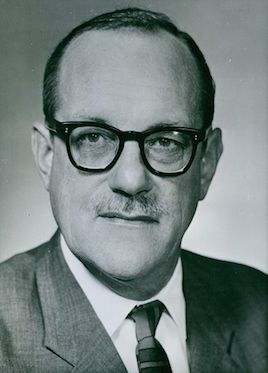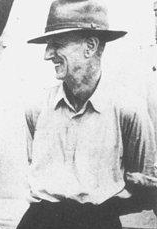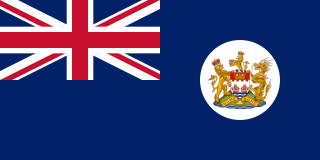A governor is an administrative leader and head of a polity or political region, ranking under the head of state and in some cases, such as governors-general, as the head of a state's official representative. Depending on the type of political region or polity, a governor may be either appointed or elected, and the governor's powers can vary significantly, depending on the public laws in place locally. The adjective pertaining to a governor is gubernatorial, from the Latin root gubernare.

An aide-de-camp is a personal assistant or secretary to a person of high rank, usually a senior military, police or government officer, or to a member of a royal family or a head of state.

A commander-in-chief or supreme commander is the person who exercises supreme command and control over an armed force or a military branch. As a technical term, it refers to military competencies that reside in a country's executive leadership, a head of state, head of government, or other designated government official.

The governor of Hong Kong was the representative of the British Crown in Hong Kong from 1843 to 1997. In this capacity, the governor was president of the Executive Council and commander-in-chief of the British Forces Overseas Hong Kong. The governor's roles were defined in the Hong Kong Letters Patent and Royal Instructions. Upon the end of British rule and the handover of Hong Kong to China in 1997, most of the civil functions of this office went to the chief executive of Hong Kong, and military functions went to the commander of the People's Liberation Army Hong Kong Garrison.

Flagstaff House, built in 1846, is the oldest example of Western-style architecture remaining in Hong Kong. It is located at 10 Cotton Tree Drive, Central – within the Hong Kong Park.

Field Marshal Sir John Lyon Chapple, was a British Army officer who served as Chief of the General Staff (CGS), the professional head of the British Army, from 1988 to 1992. Early in his military career he saw action during the Malayan Emergency and again during the Indonesia–Malaysia confrontation and later in his career he provided advice to the British government during the Gulf War.

Sir Mark Aitchison Young was a British administrator who became the Governor of Hong Kong during the years immediately before and after the Japanese occupation of the territory.

Lieutenant-Colonel Sir Matthew Nathan was a British soldier and colonial administrator, who variously served as the Governor of Sierra Leone, Gold Coast, Hong Kong, Natal and Queensland. He was Under-Secretary for Ireland from 1914 to 1916, and was responsible, with the Chief Secretary, Augustine Birrell, for the administration of Ireland in the years immediately preceding the Easter Rising.

Sir David Clive Crosbie Trench was a British Army officer and colonial governor.

Sir George Murray was a British soldier and politician from Scotland.

The Chief Secretary for Administration, commonly known as the Chief Secretary of Hong Kong, is the most senior principal official of the Government of the Hong Kong Special Administrative Region. The Chief Secretary is head of the Government Secretariat which oversees the administration of the Region to which all other ministers belong, and is accountable for his or her policies and actions to the Chief Executive and to the Legislative Council. Under Article 53 of the Basic Law, the position is known as "Administrative Secretary". As the second highest ranking public official in Hong Kong, the Chief Secretary acts as Acting Chief Executive when the Chief Executive is absent.

Sir Cecil Clementi was a British colonial administrator who served as Governor of Hong Kong from 1925 to 1930, and Governor and Commander-in-Chief of the Straits Settlements from 1930 to 1934.

Sir Franklin Charles Gimson was a British colonial administrator who served as Governor of Singapore from 1946 to 1952.

Lieutenant General Sir Edric Montague Bastyan, was a senior British Army officer, who became Governor of South Australia from 4 April 1961 until 1 June 1968 then Governor of Tasmania from 2 December 1968 until 30 November 1973. He was the last British person to be governor of either state.

Sir Denys Tudor Emil Roberts was a British colonial official and judge. Joining the colonial civil service as a Crown Counsel in Nyasaland in 1953, he became Attorney General of Gibraltar in 1960. In 1962, he was posted to Hong Kong as Solicitor-General, and was successively promoted to Attorney-General in 1966, Colonial Secretary/Chief Secretary in 1973 and Chief Justice in 1979. He was the first and only Attorney-General to become both Colonial Secretary in Hong Kong. Never having been a judge before, he was appointed as Chief Justice of the Supreme Court in 1979 and was the first and only Colonial Secretary of Hong Kong to receive such appointment.

William Caine was the first head of the Hong Kong Police Force, Colonial Secretary of Hong Kong from 1846 to 1854. He attained the rank of Lieutenant Colonel prior to his secretary appointment. Caine was also the acting Governor of Hong Kong between May and September 1859.
The Commander British Forces in Hong Kong (CBF) was a senior British Army officer who acted as Military Advisor to the Governor of Hong Kong and was in charge of the Hong Kong British Forces. The officeholder of this post concurrently assumed the office of the Lieutenant Governor of Hong Kong before the abolition of the position.

Hong Kong was a colony of the British Empire and later a dependent territory of the United Kingdom from 1841 to 1997, apart from a period of Japanese occupation from 1941 to 1945 during the Pacific War. The colonial period began with the British occupation of Hong Kong Island in 1841, during the First Opium War between the British and the Qing dynasty. The Qing had wanted to enforce its prohibition of opium importation within the dynasty that was being exported mostly from British India and was causing widespread addiction among the populace.

The Crown Colony of Labuan was a Crown colony off the northwestern shore of the island of Borneo established in 1848 after the acquisition of the island of Labuan from the Sultanate of Brunei in 1846. Apart from the main island, Labuan consists of six smaller islands; Burung, Daat, Kuraman, Papan, Rusukan Kecil, and Rusukan Besar.

British Weihaiwei or Wei-hai-wei, on the northeastern coast of China, was a leased territory of the United Kingdom from 1898 until 1930. The capital was Port Edward, which lay in what is now the centre of Huancui District in the city of Weihai in the province of Shandong. The leased territory covered 288 square miles (750 km2) and included the walled city of Weihaiwei, Port Edward just to the north, Weihaiwei Bay, Liu-kung Island and a mainland area of 72 miles (116 km) of coastline running to a depth of 10 miles (16 km) inland, an area roughly coterminous with the Huancui District of modern Weihai City. Together with Lüshunkou it controlled the entrance to the Bohai Sea and, thus, the seaward approaches to Beijing.












































